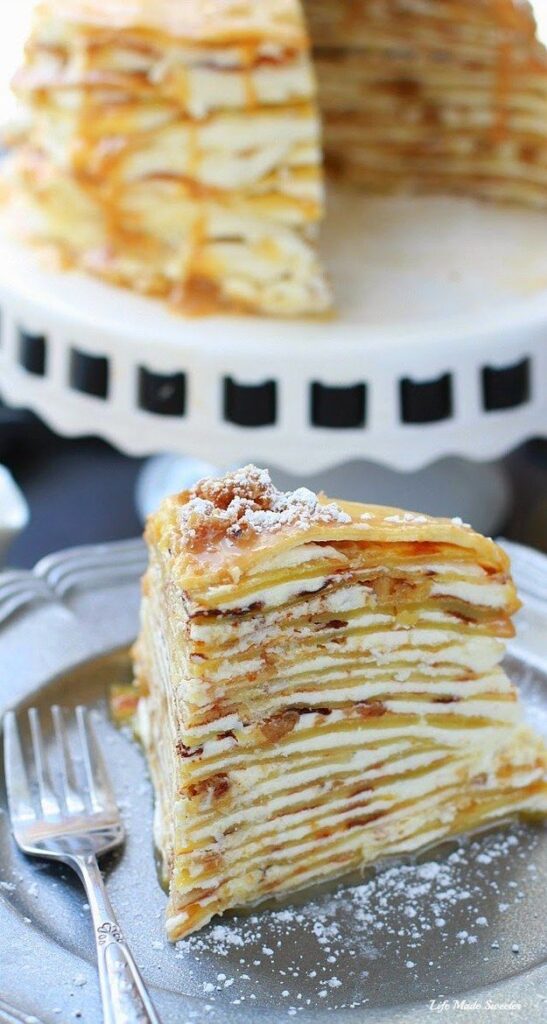
6. Flódni: A Sweet Jewish Heritage Cake
Flódni is a traditional Jewish-Hungarian cake that reflects the influence of Jewish culture on Hungarian cuisine. This multi-layered pastry is made with a rich variety of fillings, including sweet poppy seeds, apples, walnuts, and plum jam. Each layer is carefully placed inside a flaky pastry shell and then baked to perfection.
The combination of ingredients in Flódni creates a symphony of textures and flavors. The sweetness of the fruit and poppy seeds complements the nuttiness of the walnuts, while the buttery crust ties everything together. Flódni is often served in thick slices, making it a hearty and satisfying dessert that is perfect for celebrations.
This cake is especially popular during Jewish holidays like Hanukkah and Purim, but it has become a beloved treat in Hungary for all occasions. The layers of fruit and nuts make it a versatile dessert, and it’s often enjoyed alongside coffee or tea.
7. Rakott Krumpli (Layered Potato Casserole): A Sweet and Savory Delight
Though Rakott Krumpli is usually considered a savory dish, some variations of this casserole are sweet. In its sweet form, Rakott Krumpli is made by layering sweetened mashed potatoes, cottage cheese, and cinnamon-sugar. The casserole is then baked to create a golden, crispy top.
This dish is particularly popular during holidays and family gatherings, and it is often served as a comforting dessert. While the savory version of Rakott Krumpli is made with sausage, eggs, and sour cream, the sweet version offers a delightful contrast with its creamy, sugary layers. It’s a dish that showcases the versatility of Hungarian cuisine, combining savory and sweet elements in a single meal.
8. Piskóta (Sponge Cake): The Versatile Base for Many Desserts
Sponge cake, or Piskóta, is a light and airy dessert that serves as the base for many traditional Hungarian cakes. Whether it’s used as the foundation for layered cakes or enjoyed on its own with a dollop of whipped cream or fruit jam, Piskóta is a classic Hungarian treat.
Its simple ingredients—eggs, sugar, and flour—allow it to be a versatile base for many other desserts, including layered cakes, fruit-filled pastries, and trifles. Piskóta is often served with a dusting of powdered sugar or a sweet glaze, making it an easy yet delicious dessert for any occasion.
Conclusion: The Sweet Taste of Hungary
Hungarian desserts are a testament to the country’s rich cultural heritage, blending tradition with innovation to create sweet treats that are both indulgent and comforting. From the iconic Dobos Torte to the simple yet delicious Kürtőskalács, Hungary’s desserts are a reflection of its diverse history and love for craftsmanship. Whether you’re enjoying a slice of rich Eszterházy Torte, savoring the flaky layers of Rétes, or indulging in a warm serving of Túrós Csusza, Hungarian desserts offer something for everyone.
These sweet treats not only showcase the culinary expertise of Hungarian bakers but also offer a glimpse into the country’s rich traditions and customs. So, the next time you’re craving something sweet, take a journey through Hungary’s dessert landscape and experience the flavors that have been perfected over centuries.